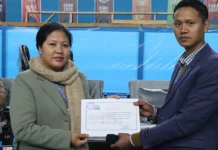[ Suresh Chandra Mohanty ]
We will probably never come to know the full dimensions of Chinese opportunistic complicity in the initiation and continuing Russia-Ukraine conflict. There are credible speculations, especially in Western media, that Xi Jinping was aware about the impending Russian invasion and apparently engineered calibration of its launch after the Winter Olympic Games. Predictably, China has continued to abstain from voting at the UN resolutions against the Russian invasion. The joint declarations after President Putin’s visit to Beijing on 4 February reiterated that the relationship between the two countries is iron clad and there is no limit of friendship and no forbidden areas of cooperation, probably displaying tacit support to the invasion. While maintaining its stand on sovereignty and territorial integrity of nations, over three weeks into the conflict, China, besides refraining from condemning the Russia aggression, has, to the contrary, slammed Western sanctions against the logic of history, driven by strong internal dynamics. Come to think of it, irrespective of the outcome of the conflict, China tends to make long-term strategic gains by mortgaging Russia’s future. If Russia loses, it will make it inextricably economically and militarily dependent on China in the long term, fulfilling the latter’s aspiration of becoming the undisputed leader in Asia. If Russia wins, it will be a collective debacle for the West, strengthening China’s quest for dominance in the Indo-Pacific region and the world.
Will China exploit the same logic in the Indo-Pacific to invade Taiwan, display aggressiveness along the LAC with India, in the East China Sea or South China Sea? President Putin justified the logic of invasion, partly (besides Kyiv’s aspiration to join the NATO) by saying that “Ukraine is an inalienable part of Russia’s history, culture and spiritual space. Ukrainians have been independent only for a few decades, are orthodox Christians sharing their religion with Russia.” The Chinese cite similar historical logic for territorial expansionism in the Indo-Pacific region, whether it is the 11-dash line first articulated by the Kuomintang government of the ROC in 1943, later revised to 9-dash line by the CPC in 1949, blatantly disregarding the Permanent Court of Arbitration’s ruling in favour of Philippines in 2016. Its belligerence along the LAC with India, in total disregard of mutual agreements in 1993, 1996, 2003, 2012 and 2013, and against its proclamation in 7 November, 1959, when it articulated the concept of LAC in the western sector and unofficially recognised the McMahon Line in the eastern sector, opining areas of settled population could not be altered (meaning Aksai Chin on Chinese side and Arunachal Pradesh on Indian side) are indications of hardening its illegitimate claims. As the military and economic asymmetry kept on widening since the ’60s, incursions into Chumar, Depsang, Chumbi Valley and claiming entire Arunachal Pradesh to be part of South Tibet, as also incursions into Nepal and Bhutan became more strident. Echoing similar sentiments as Russia, the Chinese defence spokesperson in a daily press briefing on 9 March, 2022 mentioned that Chinese people live on both sides of the Taiwan Strait and are brothers and sisters of blood ties and a family sharing the same destiny.
Tibet continued to be a sovereign and independent country with the fall of the Qing Dynasty in 1911, till 1950, when China invaded Tibet, terming it a peaceful liberation, forcing it to sign the 17-point agreement in the absence of the Dalai Lama and killing nearly 87,000 Tibetans. A Tibetan government continues to function in exile with the last election held in April 2021. Unfortunately, there was not even muted opposition to Chinese occupation of Tibet either from the western world or even India.
What are the broad tenets of avenging the ‘century of humiliation’ and the great Chinese rejuvenation? Convenient interpretation of history to restore Chinese glory by territorial expansionism? Should we extrapolate the same logic to the concept of ‘Akhand Bharat’ which posits modern-day India, Pakistan, Bangladesh, Nepal, Bhutan, Tibet, Sri Lanka and Myanmar as one nation? As civilizations evolved, new countries have emerged from national consciousness, political constructs and sovereign polity ruled in the name of a community of citizens.
President Putin was reasonably confident that any support to Ukraine would be confined to diplomatic support, supply of military hardware and economic sanctions which will have limited impact, especially if the Chinese are on board. Direct involvement of either the US or its NATO allies was ruled out even before the conflict began for the fear of a wider conflagration with likely nuclear exchange, for which both the US and the NATO had little appetite. The Russian nuclear brinkmanship has indeed paid off.
As it turned out, Russia has gone the full distance to achieve its politico-military aims with Ukraine left alone in the battle. Even in the domain of sanctions, there are serious reservations amongst the EU members in view of their excessive dependence on Russian gas and oil. The plan to provide MIG 29 by Poland to Ukraine through the NATO airbase in Germany in exchange for F 16 from the US has fallen through due to serious hindrances in implementation and fear of a wider conflict.
As regards China, notwithstanding the Taiwan Relations Act of 1979, further strengthened by the Taiwan Allies International Protection and Enhancement Initiative Act of March 2020 and freedom of navigation operations in the South China Sea, the American strategic ambiguity with regard to its support to Taiwan against unilateral and forcible unification with China persists. The Act does not guarantee that the US will intervene militarily if the PRC invades Taiwan. If the US support to Ukraine is any indication, it will only strengthen the Chinese resolve to invade Taiwan as the US penchant to get involved in a war far away in the Indo-Pacific is doubtful, given the recent history of its hasty withdrawal from Afghanistan. China continues to be relentless in its propaganda warfare in the legal, media and psychological domains to further consolidate its territorial and maritime claims in the region, including making operational the Land Border Law on 1 January, 2022, in addition to the Maritime Traffic Safety Law and the Coast Guard Law passed last year.
If the international community intends preventing a Ukraine 2.0 in the Indo-Pacific region, the time to act is now. First, the enabling provisions of the Taiwanese Relations Act would have to be more robust and declaratory in form of specific response by the US to sequenced and calibrated expansionism by China. The Chinese violated the Taiwanese ADIZ 969 times in 2021 against a modest 380 times in 2019. Concurrently, the AUKUS and the Quad would have to be invigorated.
Second, the US intelligence community would find it extremely difficult to penetrate the ring-fenced CCP decision-making architecture due to its closed society and impregnable firewalled communication system, as against the Russians, where the US had reasonably accurately predicted Putin’s invasion planning and build-up of forces. The joint intelligence mechanism backed up by technical support would have to be strengthened to monitor, detect, preempt and counter every move of the Chinese in the Indo-Pacific region.
Third, the Chinese propaganda and disinformation campaign will have to be aggressively thwarted by a joint approach by all affected nations. The story needs to be told and international opinion built against the Chinese belligerence before it is too late. A list of sanctions needs to be prepared jointly by coalition of nations to impose costs on Beijing progressively in preparation for its invasion and not await military action as in the case of Russia. China will be a much more formidable economic opponent than Russia has been. Diversification and consensus building amongst regional and extra regional powers will be imperative to exert punitive impact on Chinese economy.
Fourth, on the military font, deterrence capabilities of key allies to include Japan, South Korea, Vietnam, Philippines, Indonesia and Taiwan will have to be further upgraded. Nations affected by Chinese coercive activities, including Vietnam and Malaysia, will have to stockpile critical supplies and military wherewithal, including weapons, ammunition, sensors, etc. The ASEAN lacks the EU solidarity. However, it cannot remain hostage to Chinese divide and rule machinations. Strategic reserves of rare earth minerals, energy supplies and medical equipment will be required to mitigate periods of disruption. India would have to fight a lonely battle in the high Himalayas. It therefore ought to build up its reserves of critical military equipment, especially considering the ever-increasing closeness between China and Russia, besides evolving a robust and credible quid pro quo strategy in the entire spectrum of conflict. The domains of cyber, electronic warfare and space will play significant role in the non-contact warfare domain and will need to be comprehensively addressed.
Fifth, forward presence of the US, the UK, France and Australia along Japan’s southern island chain and across northern Australia would reinforce Indo-Pacific’s eastern and southern perimeters.
The power imbalances are stark and heavily loaded in favour of China when it senses an opportunity to fulfil its geopolitical ambitions by aggressive and destabilising activities against territorial integrity of sovereign countries. We are already behind the curve and it will require a joint effort to stem the tide. Lessons from Ukraine 1.0 should not be lost sight of. (Maj Gen Suresh Chandra Mohanty is security adviser to the government of Arunachal Pradesh.)



